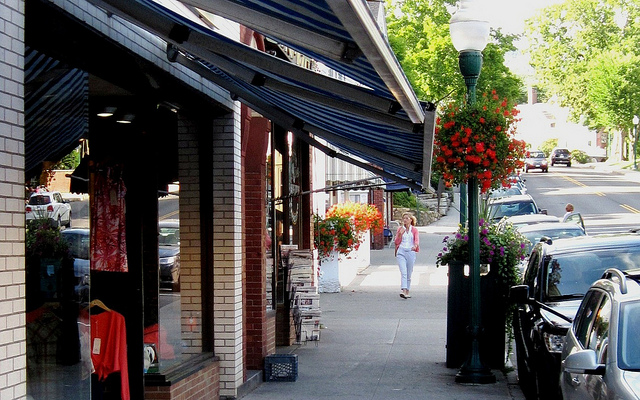Every week, we bring you the latest news in placemaking, landscape architecture and urban planning, the nature-mental health link, and much more. Check back each week for new roundups and items.
Compact and Connected Communities Improve Public Health
“We know from exhaustive past research that walkable neighborhoods and cities reduce driving, associated emissions, and living costs. Three important academic studies published earlier this year demonstrate that they are good for our health, too. In particular, the research, which examines different aspects of compact, walkable, and mixed-use communities and compares those aspects to published government health data, finds that such neighborhoods and cities are strongly associated with reduced rates of obesity, high blood pressure, heart disease, and diabetes. The reason is close to a tautology: walkable environments encourage walking, which in turns facilitates good health. While researchers are careful to point out that many other factors facilitate good health as well, the results hold up even when the studies are controlled to eliminate those other factors from consideration.”
South Los Angeles Residents Push to Transform Railway to 8-Mile Greenbelt
“Jameca Marshall has navigated Slauson Avenue all her life, and she knows how dangerous it is…She was one of about three-dozen residents who attended a meeting of the Metropolitan Transportation Authority last week, asking them to move forward with a project to transform eight miles of abandoned roadway into a bike and pedestrian path. Most of the property is owned by the MTA. Residents told the board the project was needed in a community known for high obesity and a low rate of car ownership. Many noted that South Los Angeles is also ‘park poor,’ with less than 2 acres of park space for every 1,000 residents. By comparison, West Los Angeles has more than 50 acres of park space for every 1,000 residents. The proposal before the MTA was authored by board member Mark Ridley-Thomas, who represents the area on the Los Angeles County Board of Supervisors.”
From Parking Lot to Gathering Place: Sundance Square Leads As a Model for Programmable Public Space
“Where once there were two parking lots on either side of Main Street in the center of downtown Fort Worth, there is now the much-loved and much-used Sundance Square. The Square has become an integral part of the downtown Fort Worth experience, hosting events both large and small, and taking on an increasing role in the life of the city. PPS (Project for Public Spaces) has proudly played a major role in the Placemaking efforts of Fort Worth; our participation in this evolution of Sundance Square and the surrounding community is the most recent example. In helping to shape the design and program of this plaza, PPSers facilitated public workshops that included community stakeholders, event producers, city officials, and members of the general public – a common starting point in the Placemaking process. Through these discussions, it became clear that people mostly thought of downtown Fort Worth as an area to pass through, but not a destination in itself. There wasn’t enough seating or shade, for starters, and the area was underutilized. During the week it was bustling, as well as during weekend events, but other times it felt desolate. The community also felt that the variety of stores and services were great, but the neighborhood could use more places for food and other necessities.”

Large Cities Are Less Green: True or False?
“What, practically speaking, is a city? The answer to that question is crucial for the growing number of researchers who want to examine cities through a scientific lens — yet even leaders in that field can’t agree on a definition… In order to try to identify the underlying mechanisms of cities, Bettencourt (a theoretical physicist by training) and other scientists have been plugging numbers into intricate equations. Everyone agrees that the selected boundaries are very important, because small differences in the inputs can lead to widely divergent outcomes. And pretty much everyone agrees that the official administrative unit — such as New York City proper — is too artificial. But beyond that, differences emerge.”
